[Survey] GEMM, Strassen and Winograd Fast Convolution Algorithms
GEMM, Strassen and Winograd Fast Convolution Algorithms
GEMM and Img2Col
DaVinci1 accelerated convolution by translating conv2d into GEMM by Img2Col.
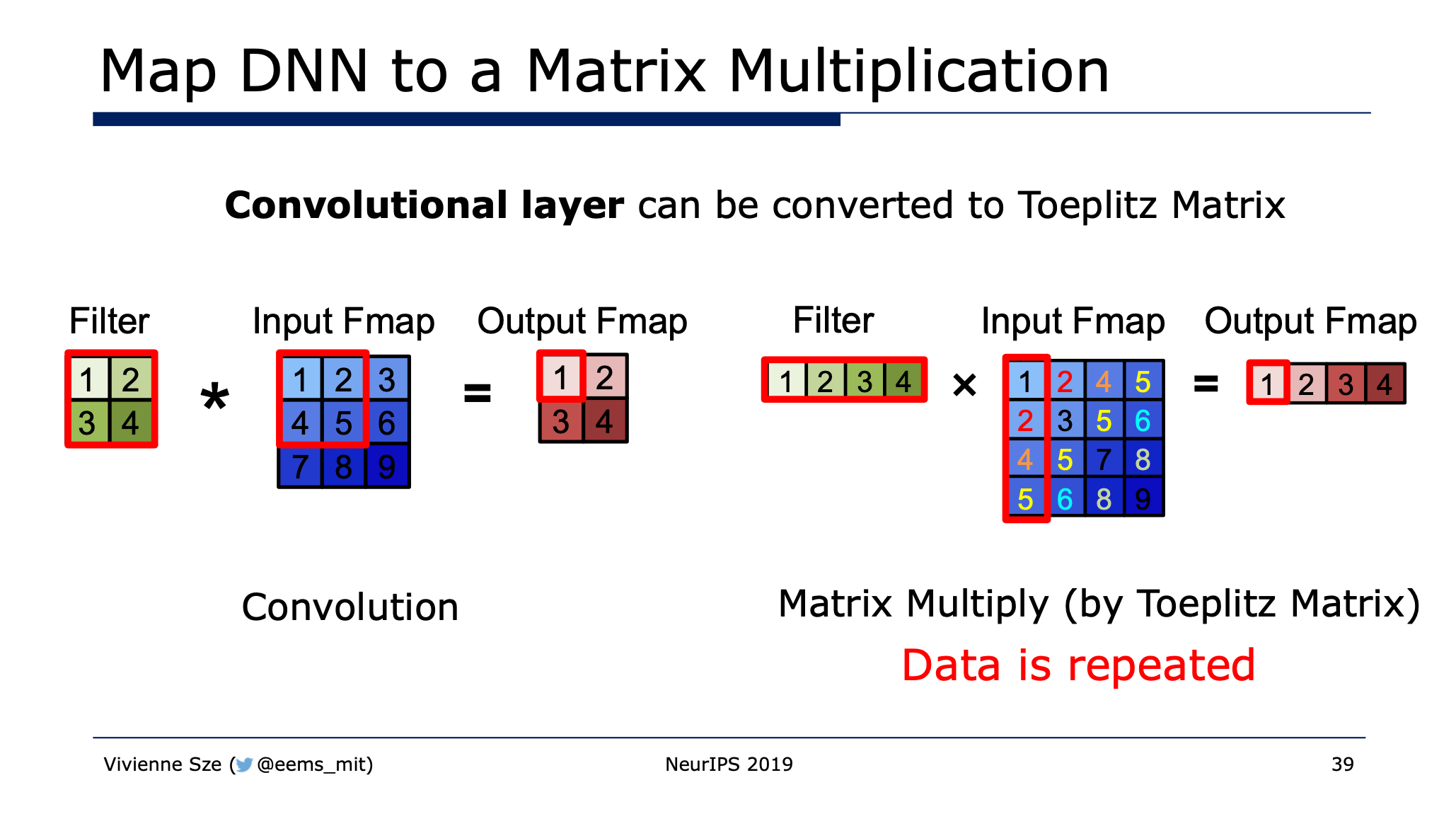
Strassen Algorithm
Cong and Xiao2 introduce Strassen algorithm to recursively compute 2x2 Matrix Mult using only 7 multiplications.
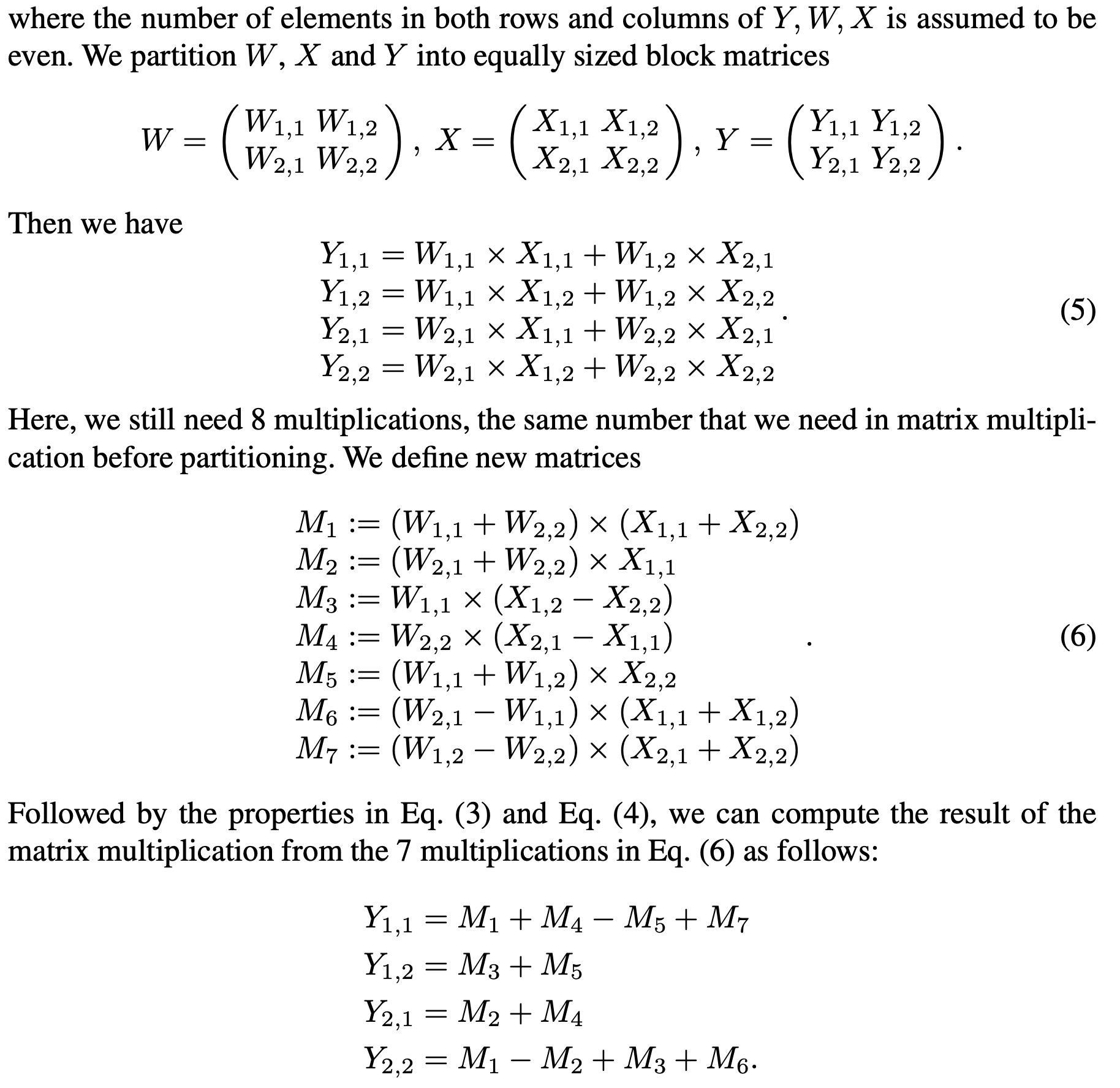
Boyer3 also provides another version of Strassen matrix multiplication algorithm.
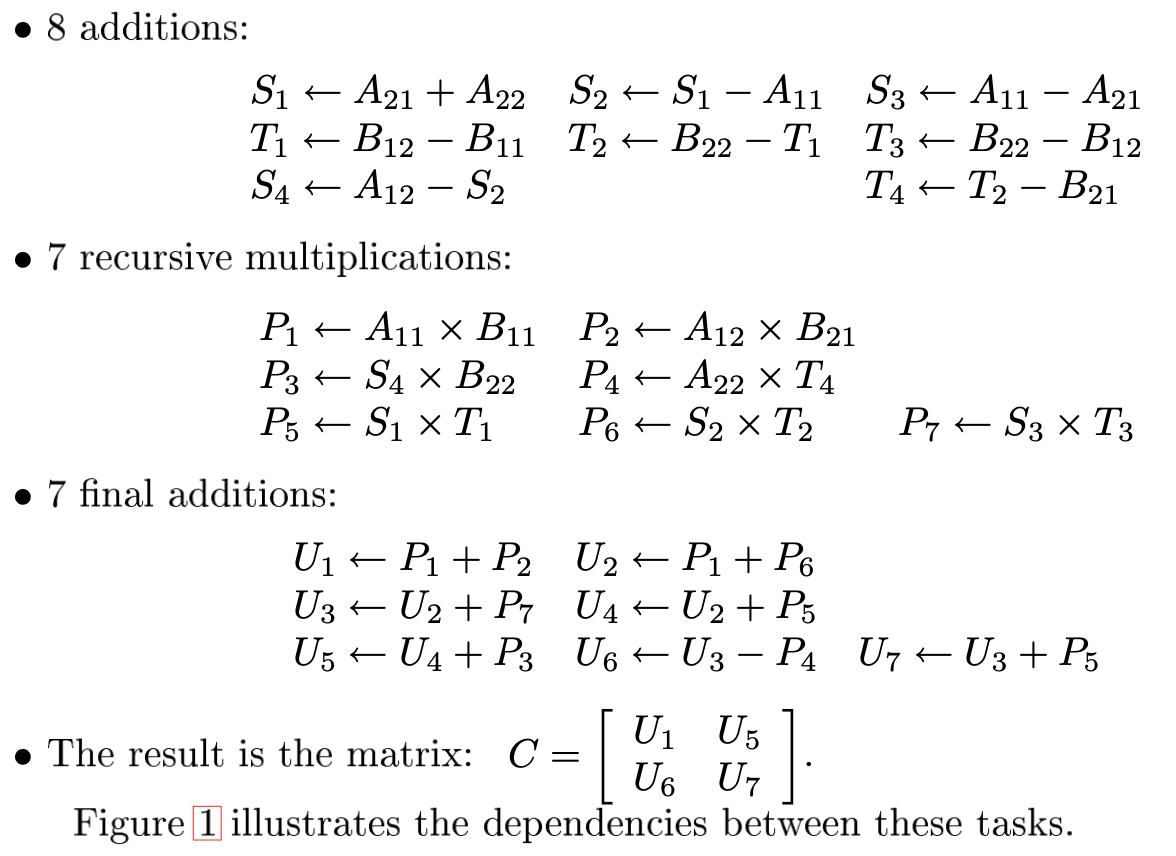
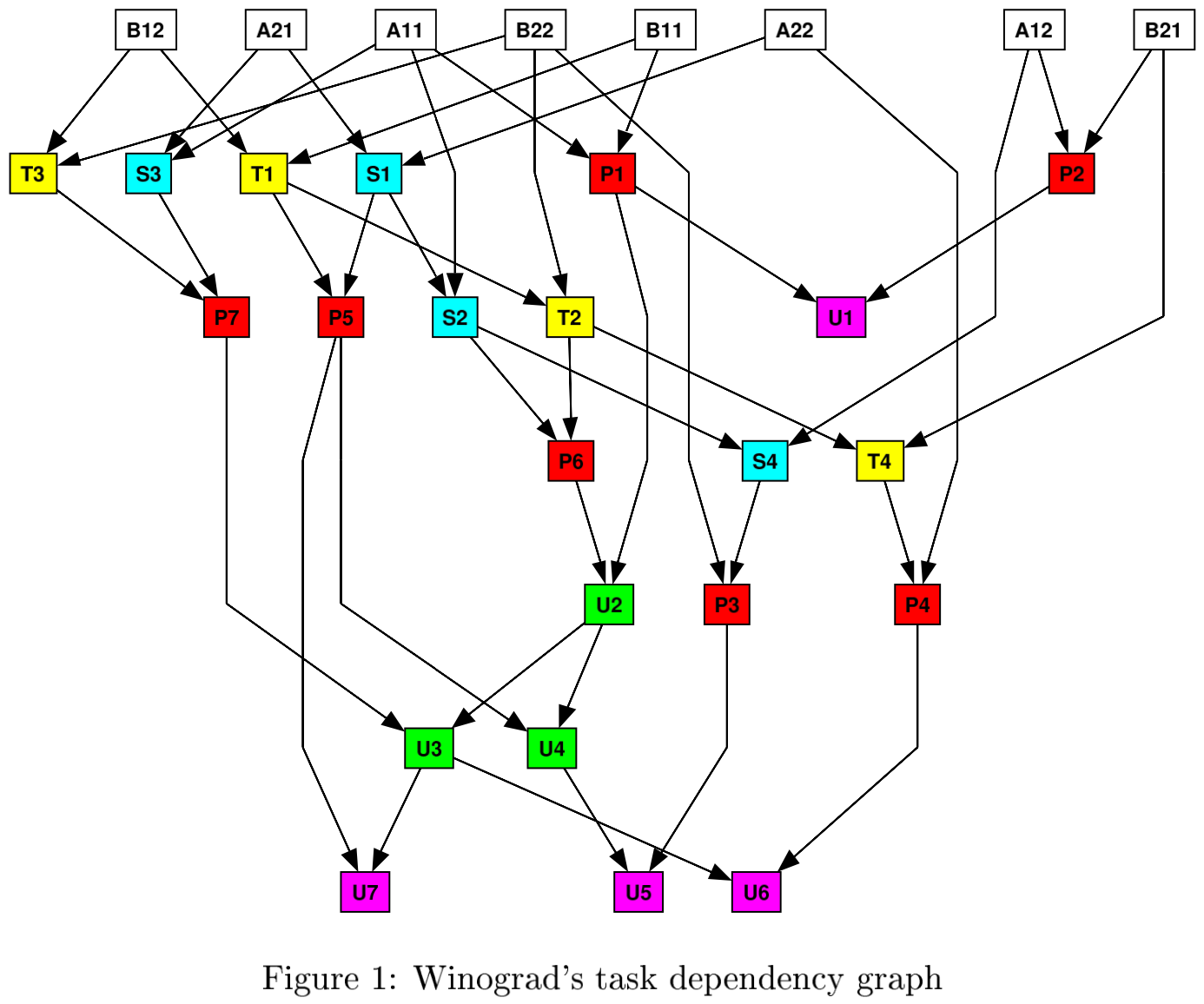
Winograd Algorithm
3x3 Stride 1 Conv
Lavin4 first used Winograd’ s minimal filtering algorithms for convolutional neural networks.
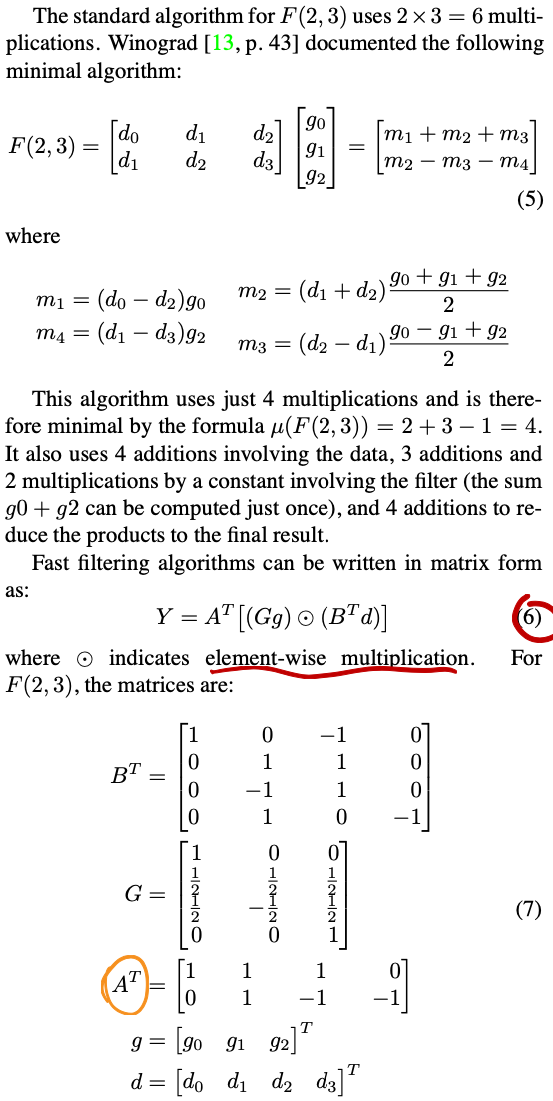
From equation 7 we can found that we can simply implement those transforming via shift and add.
The number of additions and constant multiplications required by the minimal Winograd transforms increases quadratically with the tile size. Thus for large tiles, the complexity of the transforms will overwhelm any savings in the number of multiplications.
Kala5 proposed a Winograd-GEMM architecture that both able to compute Winograd accelerated Convolution and full connection layers that are computed using general element-wise matrix multiplication (GEMM).
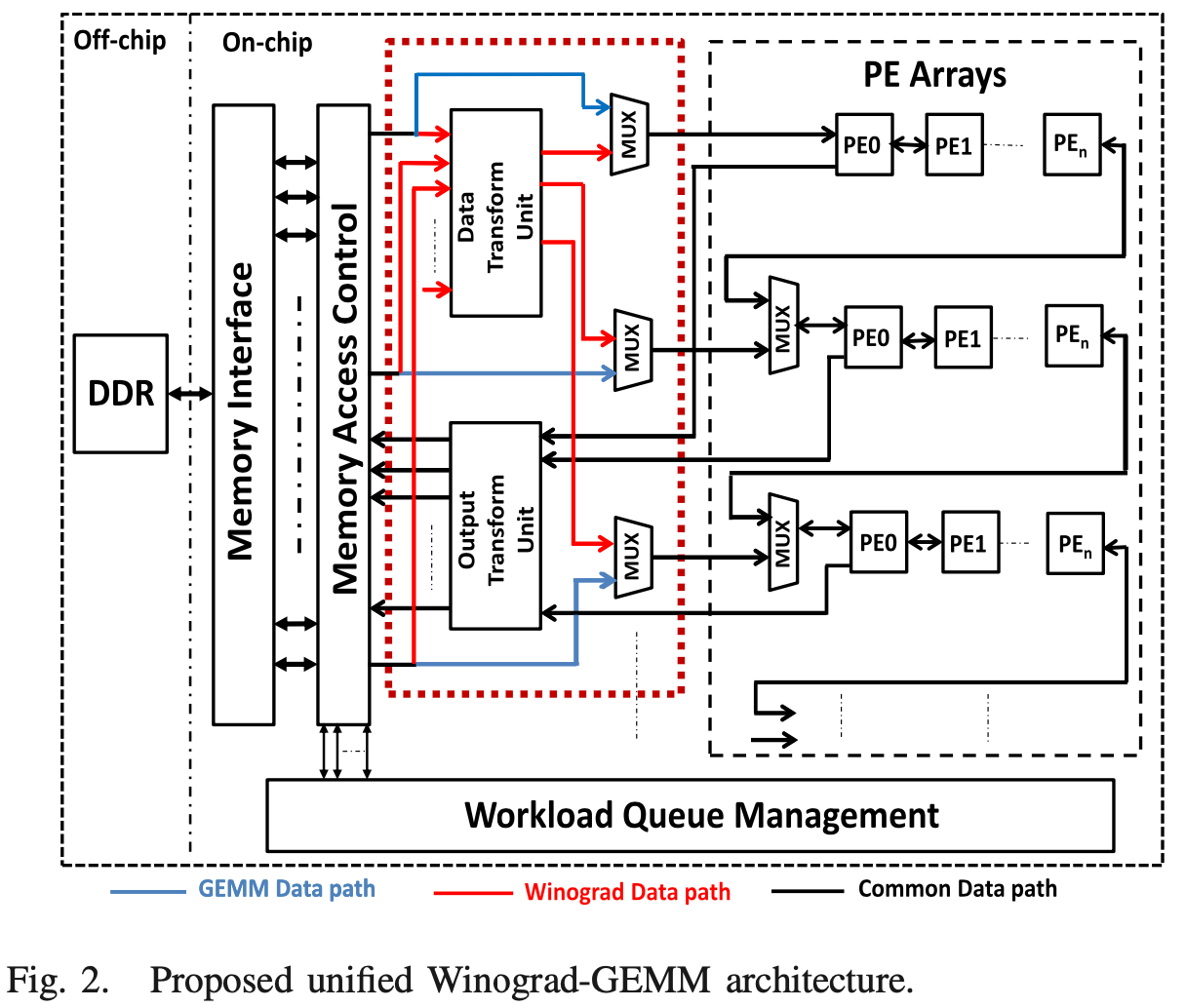
Ahmad and Pasha 6 tried to explore both feature overlap and kernel reuse.
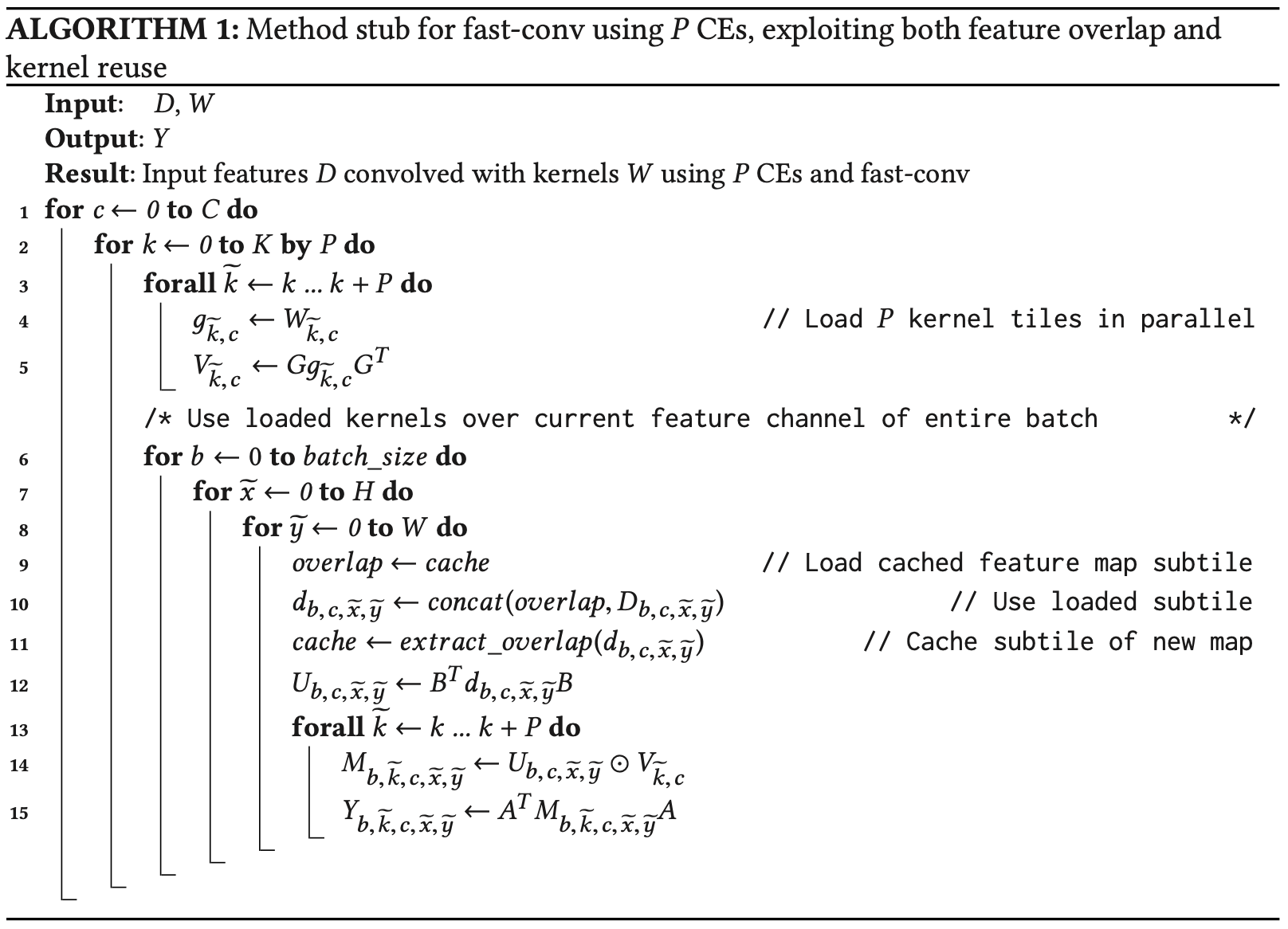
Lu7 wrote a section to introduce the design space exploration of Winograd hardware.
Shen8 demonstrated a template-based architecture for F(2,3) Winograd operation.
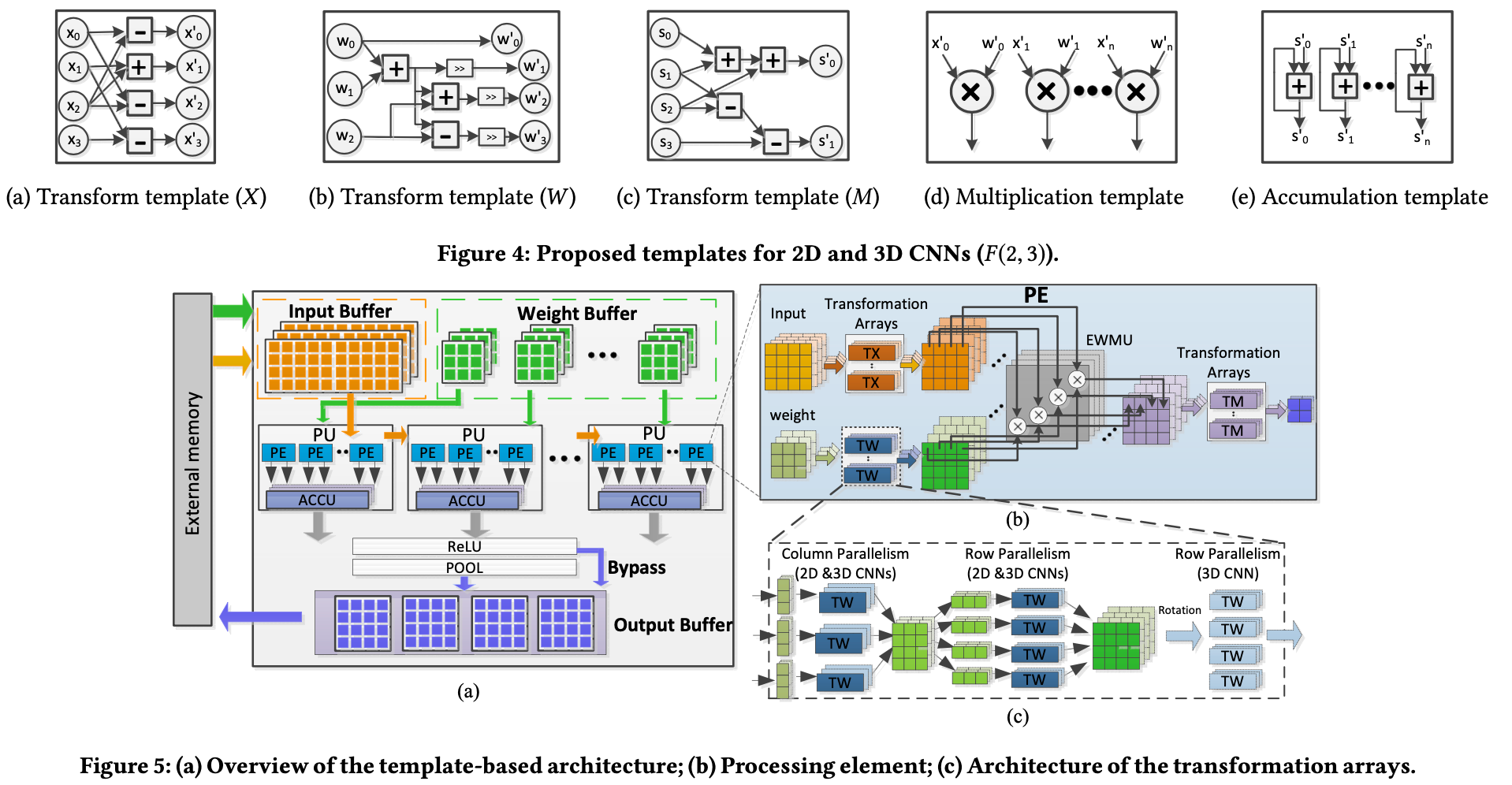
7x7, 3x3 Stride 2 Conv
There are several stride of 2 convolution layers in the neural networks as well.
Yepez9 proposed transform kernels of size 3, 5 and 7 with stride of 2 for 1D, 2D and 3D convolution. Compared to regular convolutions, the implementations for stride 2 are 1.44 times faster for a 3 × 3 kernel, 2.04× faster for a 5 × 5 kernel, 2.42× faster for a 7 × 7 kernel, and 1.73× faster for a 3 × 3 × 3 kernel.
1D
In 1-D convolution with stride 2, odd positions of the input are multiplied with odd positions of the kernel, and even-position input elements are multiplied with even-position kernel elements; no multiplication between odd-position and even-position elements occurs. Thus, we can separate the input and kernel elements into two groups: odd and even. Using these groupings, it is possible to convert a convolution of stride 2 into two convolutions of stride 1.
Size 3 Kernel: F(2,2) Winograd and normal mult
Size 5 Kernel: F(2,3) and F(2,2) Winograd
Size 7 Kernel: F(2,4) and F(2,3) Winograd
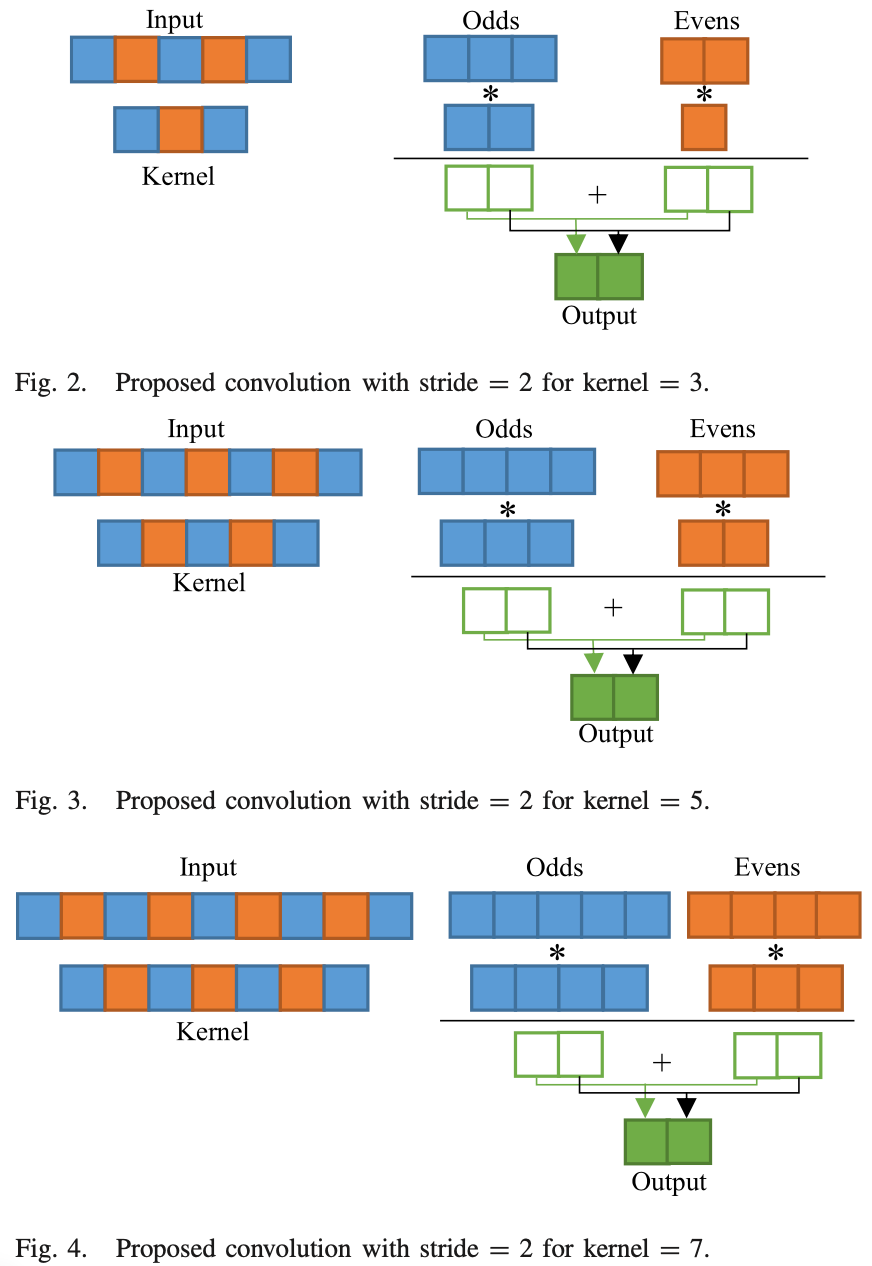
2D
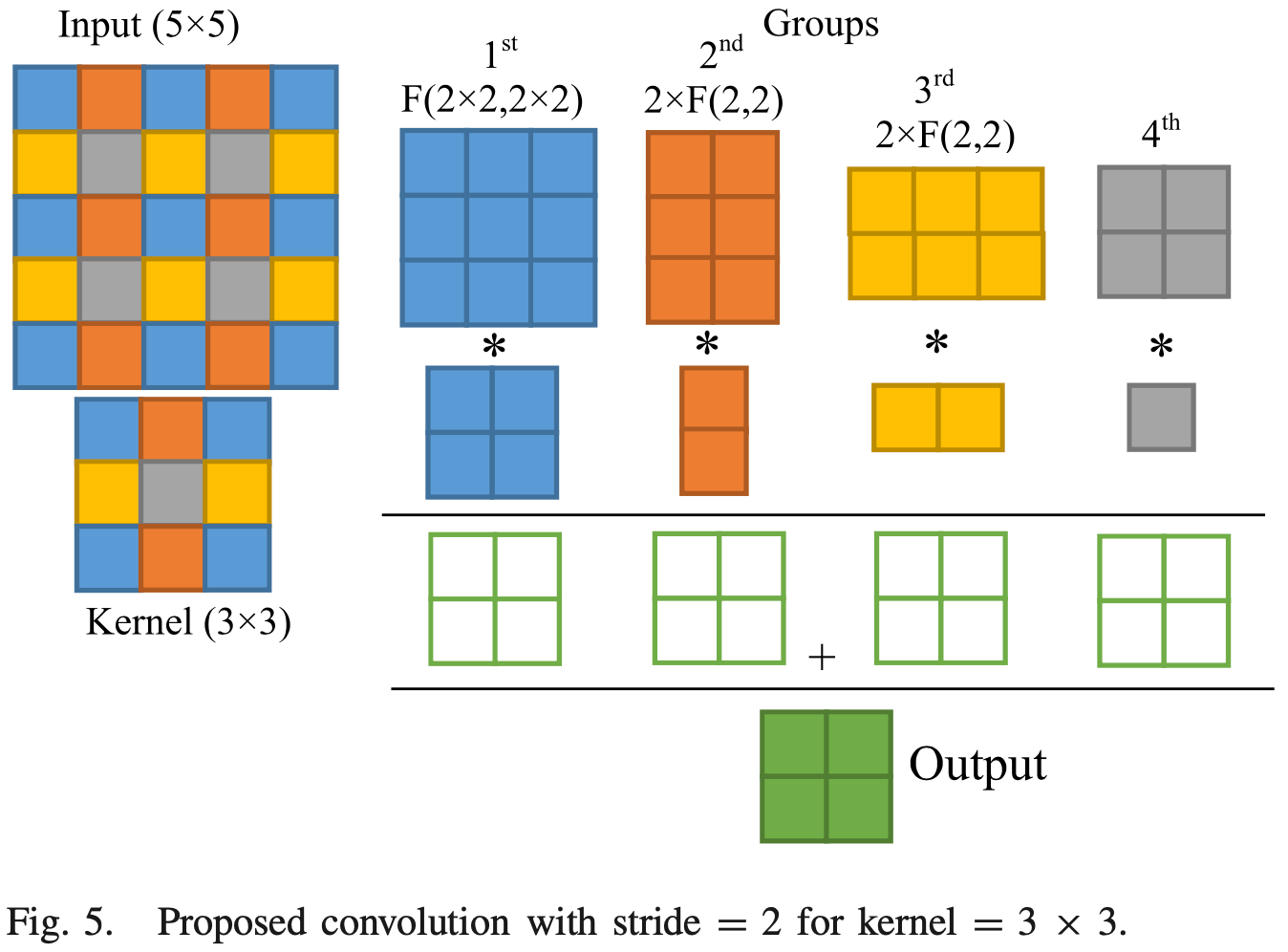
#####
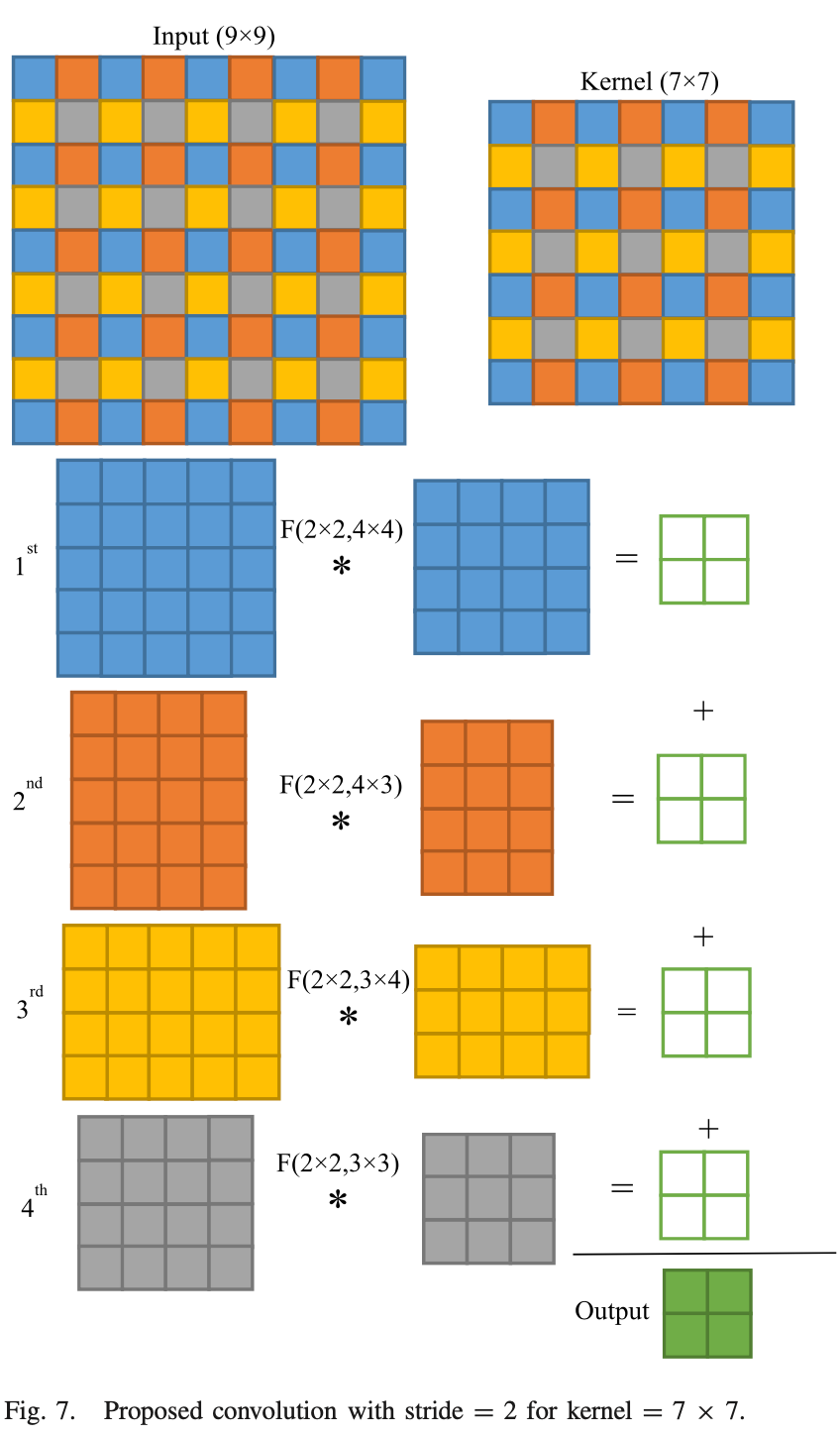
3D Conv
Deng10 and Yepez9 proposed Winograd algorithm that fit 3D convolution.
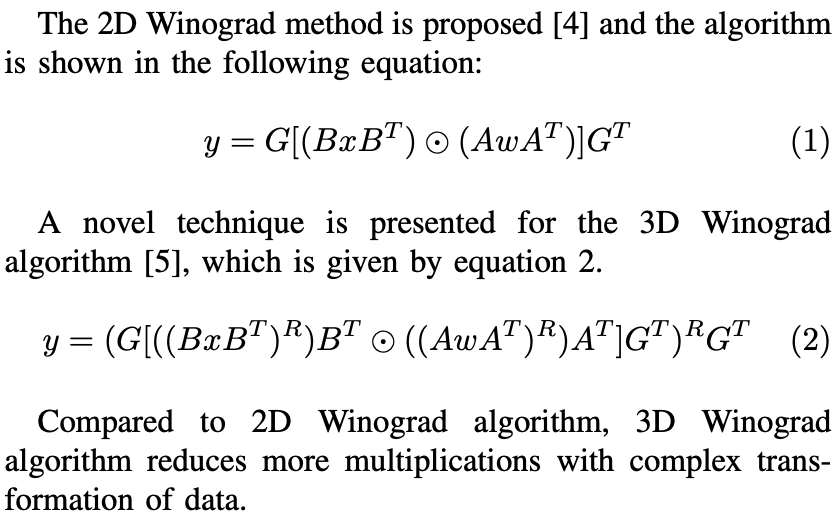
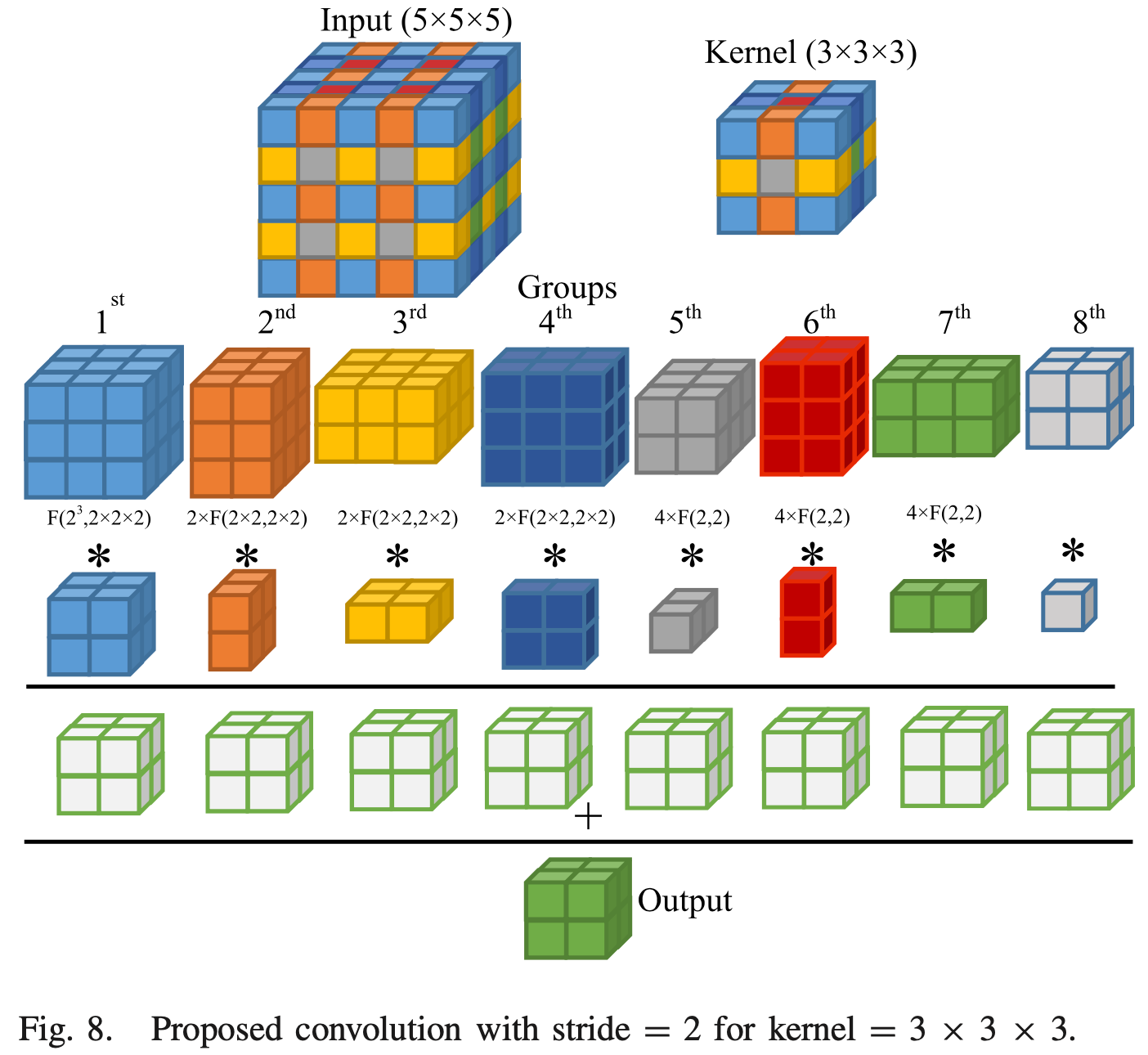
Explore Sparsity
Liu11 and Shi12 also explored the sparsity of Winograd MM operations.
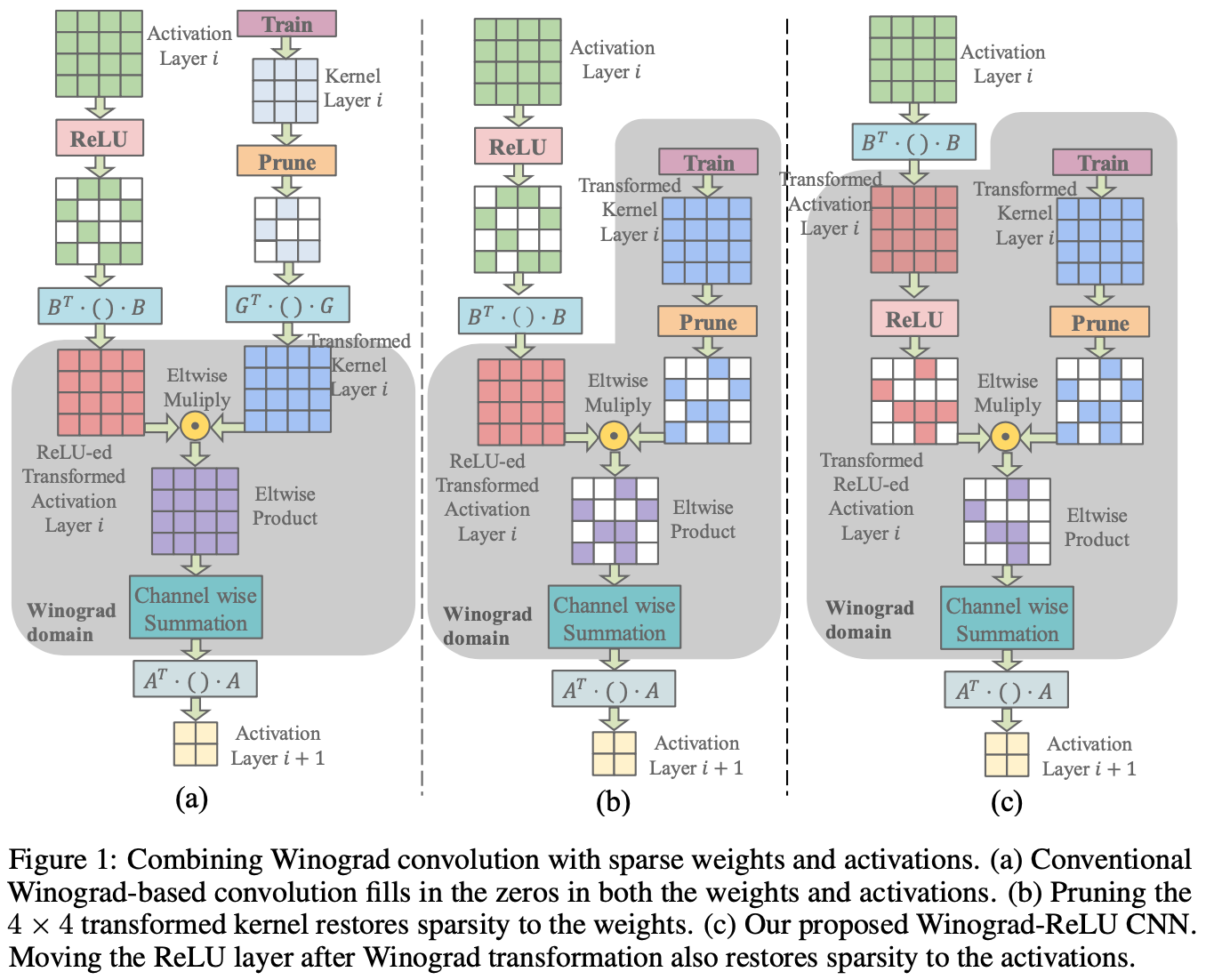
Strassen–Winograd Algorithm
Zhao13 combined the Strassen and Winograd algorithms together.
Algorithm 1 shows the Strassen Algorithm. Here the block matrix multiplications is still the normal convolution or GEMM. Then in algorithm 2, the Convolution is replaced by Winograd operation.
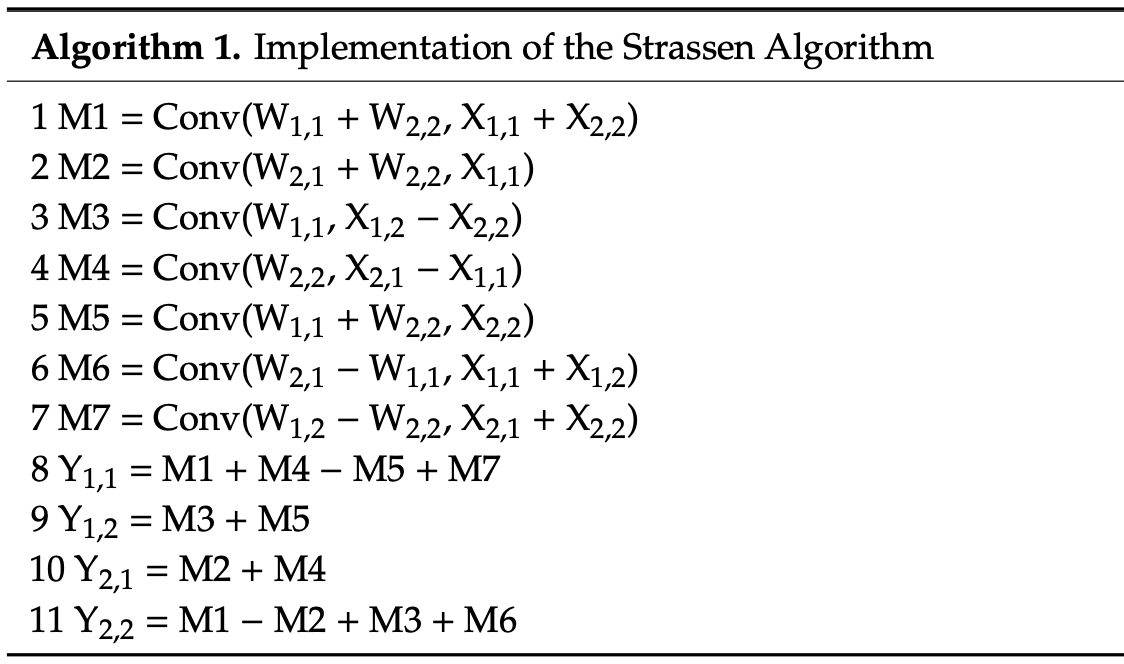
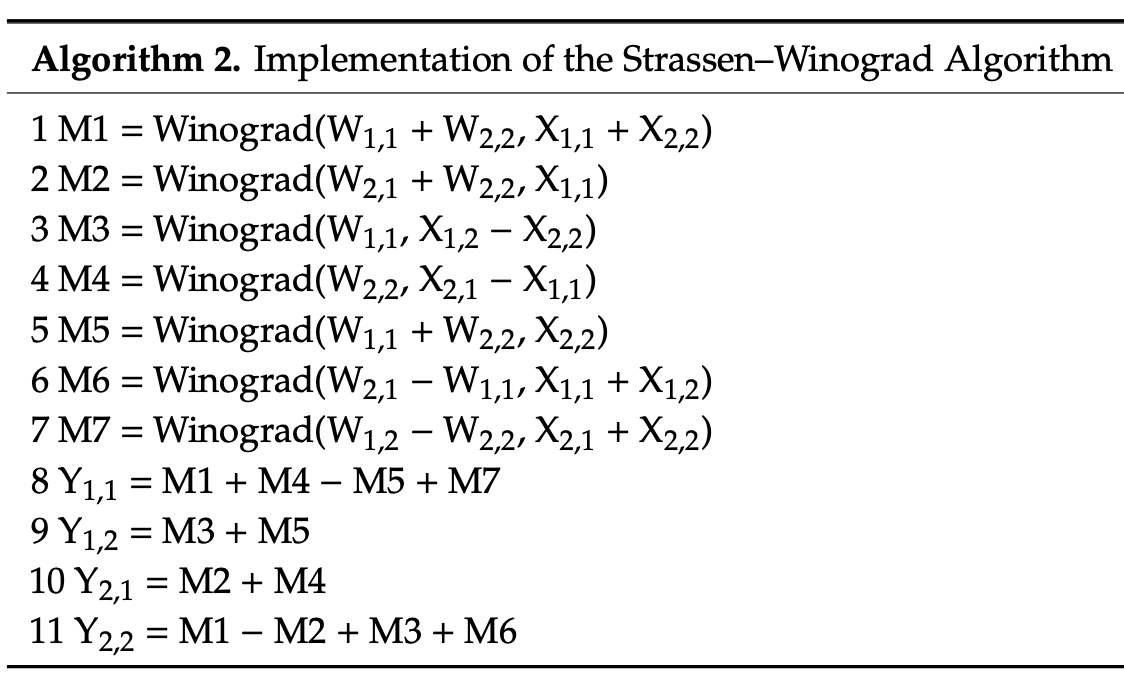
Reference
-
H. Liao, J. Tu, J. Xia, and X. Zhou, “DaVinci: A Scalable Architecture for Neural Network Computing,” in 2019 IEEE Hot Chips 31 Symposium (HCS), Aug. 2019, pp. 1–44. ↩
-
J. Cong and B. Xiao, “Minimizing Computation in Convolutional Neural Networks,” in Artificial Neural Networks and Machine Learning – ICANN 2014, vol. 8681, S. Wermter, C. Weber, W. Duch, T. Honkela, P. Koprinkova-Hristova, S. Magg, G. Palm, and A. E. P. Villa, Eds. Cham: Springer International Publishing, 2014, pp. 281–290. ↩
-
B. Boyer, J.-G. Dumas, C. Pernet, and W. Zhou, “Memory efficient scheduling of Strassen-Winograd’s matrix multiplication algorithm,” arXiv:0707.2347 [cs], May 2009. ↩
-
A. Lavin and S. Gray, “Fast Algorithms for Convolutional Neural Networks,” arXiv:1509.09308 [cs], Nov. 2015. ↩
-
S. Kala, B. R. Jose, J. Mathew, and S. Nalesh, “High-Performance CNN Accelerator on FPGA Using Unified Winograd-GEMM Architecture,” IEEE Trans. VLSI Syst., vol. 27, no. 12, pp. 2816–2828, Dec. 2019. ↩
-
A. Ahmad and M. A. Pasha, “FFConv: An FPGA-based Accelerator for Fast Convolution Layers in Convolutional Neural Networks,” ACM Trans. Embed. Comput. Syst., vol. 19, no. 2, pp. 1–24, Mar. 2020. ↩
-
L. Lu, Y. Liang, Q. Xiao, and S. Yan, “Evaluating Fast Algorithms for Convolutional Neural Networks on FPGAs,” in 2017 IEEE 25th Annual International Symposium on Field-Programmable Custom Computing Machines (FCCM), Napa, CA, USA, Apr. 2017, pp. 101–108. ↩
-
J. Shen, Y. Huang, Z. Wang, Y. Qiao, M. Wen, and C. Zhang, “Towards a Uniform Template-based Architecture for Accelerating 2D and 3D CNNs on FPGA,” in Proceedings of the 2018 ACM/SIGDA International Symposium on Field-Programmable Gate Arrays, Monterey CALIFORNIA USA, Feb. 2018, pp. 97–106. ↩
-
J. Yepez and S.-B. Ko, “Stride 2 1-D, 2-D, and 3-D Winograd for Convolutional Neural Networks,” IEEE Trans. VLSI Syst., vol. 28, no. 4, pp. 853–863, Apr. 2020. ↩ ↩2
-
H. Deng, J. Wang, H. Ye, S. Xiao, X. Meng, and Z. Yu, “3D-VNPU: A Flexible Accelerator for 2D/3D CNNs on FPGA,” in 2021 IEEE 29th Annual International Symposium on Field-Programmable Custom Computing Machines (FCCM), Orlando, FL, USA, May 2021, pp. 181–185. ↩
-
X. Liu, J. Pool, S. Han, and W. J. Dally, “Efficient Sparse-Winograd Convolutional Neural Networks,” arXiv:1802.06367 [cs], Feb. 2018. ↩
-
F. Shi, H. Li, Y. Gao, B. Kuschner, and S.-C. Zhu, “Sparse Winograd Convolutional Neural Networks on Small-scale Systolic Arrays,” in Proceedings of the 2019 ACM/SIGDA International Symposium on Field-Programmable Gate Arrays, Seaside CA USA, Feb. 2019, pp. 118–118. ↩
-
Y. Zhao, D. Wang, and L. Wang, “Convolution Accelerator Designs Using Fast Algorithms,” Algorithms, vol. 12, no. 5, p. 112, May 2019. ↩